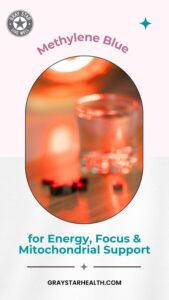One fascinating tool gaining popularity in wellness circles is red light therapy (RLT). This non-invasive treatment has captured attention for its wide range of health benefits. If you’re curious about this cutting-edge yet straightforward health strategy, here’s what you need to know.
What is Red Light Therapy?
Red light therapy uses specific wavelengths of light, typically in the red and near-infrared spectrum, to penetrate the skin and stimulate cellular function. Unlike the harmful UV rays from the sun or tanning beds, red and near-infrared light is safe and does not damage your skin or cells. Devices for red light therapy range from small handheld tools to full-body panels, making it accessible for various needs and budgets.
How Red Light Therapy Works at the Cellular Level
At the heart of red light therapy’s magic is its effect on mitochondria, often referred to as the “powerhouses” of our cells. These light wavelengths boost mitochondrial function, enhancing the production of adenosine triphosphate (ATP), the primary energy currency in our bodies. When your cells have more energy, they perform their functions more efficiently, promoting healing, regeneration, and overall vitality.
Additionally, red light therapy reduces oxidative stress and inflammation at the cellular level. This makes it an excellent tool for combating some of the common challenges of midlife, such as joint pain, fatigue, and slow recovery from exercise.

Top Benefits of Red Light Therapy for Midlife Women
The potential benefits of red light therapy are extensive, but here are a few that stand out for women in midlife:
- Skin Health and Anti-Aging: Stimulates collagen production, reduces fine lines and wrinkles, and improves skin elasticity.
- Improved Energy and Mood: By enhancing cellular energy, it can help combat fatigue and support a balanced mood.
- Pain Relief and Joint Health: Helps reduce inflammation and pain, especially for those dealing with arthritis or other joint issues.
- Hormonal Balance: Early studies suggest RLT may support hormonal health, particularly by improving sleep through melatonin regulation.
- Muscle Recovery and Strength: Boosts recovery time post-exercise and may even enhance muscle performance and endurance.
Simple Ways to Incorporate Red Light Therapy
Adding red light therapy to your routine is surprisingly easy. Many women start with a small device for targeted areas like the face or joints. For those looking to go all-in, investing in a full-body panel can provide systemic benefits. Aim for sessions of about 10-20 minutes, several times a week, for noticeable results. You can use it while relaxing, meditating, or even listening to a podcast—making it a seamless part of your self-care routine.
Wondering what red light therapy is best?
There are many options available, but here are a few of my favorites. These are products I have in my home from companies that I know and trust.
I started red light therapy when I purchased my Firelight Sauna from SaunaSpace It’s an infrared sauna that combines full spectrum infrared heat with built in red light therapy due to their unique Firelight bulbs! We love it in our home! You can learn more about SaunaSpace HERE and use code LAINI to save 10% off any order.

As much as I love my sauna, I don’t always want to sweat to enjoy the benefits of red light therapy. My next favorite company is Therasage. They have an amazing line of up of healing products including red light, sauna, PEMF, ozone and more. For red light, I LOVE the TheraPro PEMF Mat with Red Light, the Tri-Lite and my new favorite device, the TheraGlow Face Mask. Shop Therasage HERE Get 10% off with code LAINI

A Simple Step Toward Better Health
Red light therapy is a gentle, non-invasive way to nurture your body and support your health in midlife. Whether you’re looking to reduce pain, rejuvenate your skin, or simply boost your energy levels, this accessible technology offers a powerful solution. With consistency, it can become an integral part of your wellness toolkit, helping you feel radiant and strong in your next chapter.









